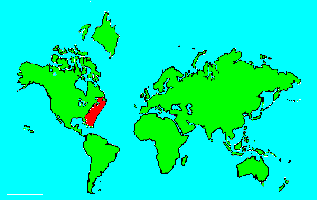SPECIES INFO
Oceanic two wing flying fish (Exocoetus obtusirostris) is found primarily in the Gulf Stream. It can be found from New Jersey south to Florida and the Gulf of Mexico to Brazil. This flying fish can grow to about 10 inches. The pectoral fins are enlarged for flying and when folded back can reach the base of the tail.Flying fish genus (Exocoetus) has per Migdalski about 22 species found in warmer and tropical oceans.
The Exocoetidae family contains a variety of fish including the flying fishes and halfbeaks.
Flying fish appear to reach speeds of about 40 miles an hour before leaping into the air. As they leap into the air, their tails are vibrated giving them an extra push upwards. After becoming airborne, they spread their pectoral fins which serve as gliding wings. As the air speed slows, the fish can drop lower, and then use its vibrating tail to become airborne again. With the combination of several of these flights, the total distance covered can be almost a quarter of a mile.
The largest flying fish is the California flying fish (Cypselurus californicus) which can reach 18 inches in length.
Halfbeaks including the genus Exocoetus are widely distributed. These fish have very elongated lower jars and dorsal and anal fins set far back on the body. These fish use their vibrating tails to travel on top of the water.
Some taxonomists divide this family into the two natural halves. We have retained this as one family.
Atheriniformes group of fish consists of diverse marine and freshwater kinds. It includes many of the tropical aquarium fish (guppies, mollies, and platies), flying fish, and the needle fish of the ocean.
Bony fish, Class Teleostomi, are a class of chordates that include the majority of fish-like animals found on earth. They are characterized by a bony jaw and a bony skeleton. They are found in both fresh and marine waters.
Backboned Animals (Phylum Chordata) are the most advanced group of animals on earth. These animals are characterized by having a spinal cord or backbone. Most members have a clearly defined brain that controls the organism through a spinal cord. Fish, amphibians, reptiles, birds, and mammals are in this phylum.
Currently, some taxonomists believe that the fish should be divided into two groups (sharks and regular fishes) and that there are some other primitive groups in the phylum such as hagfish or lampreys.
Animal Kingdom contains numerous organisms that feed on other animals or plants. Included in the animal kingdom are the lower marine invertebrates such as sponges and corals, the jointed legged animals such as insects and spiders, and the backboned animals such as fish, amphibians, reptiles, birds, and mammals.

